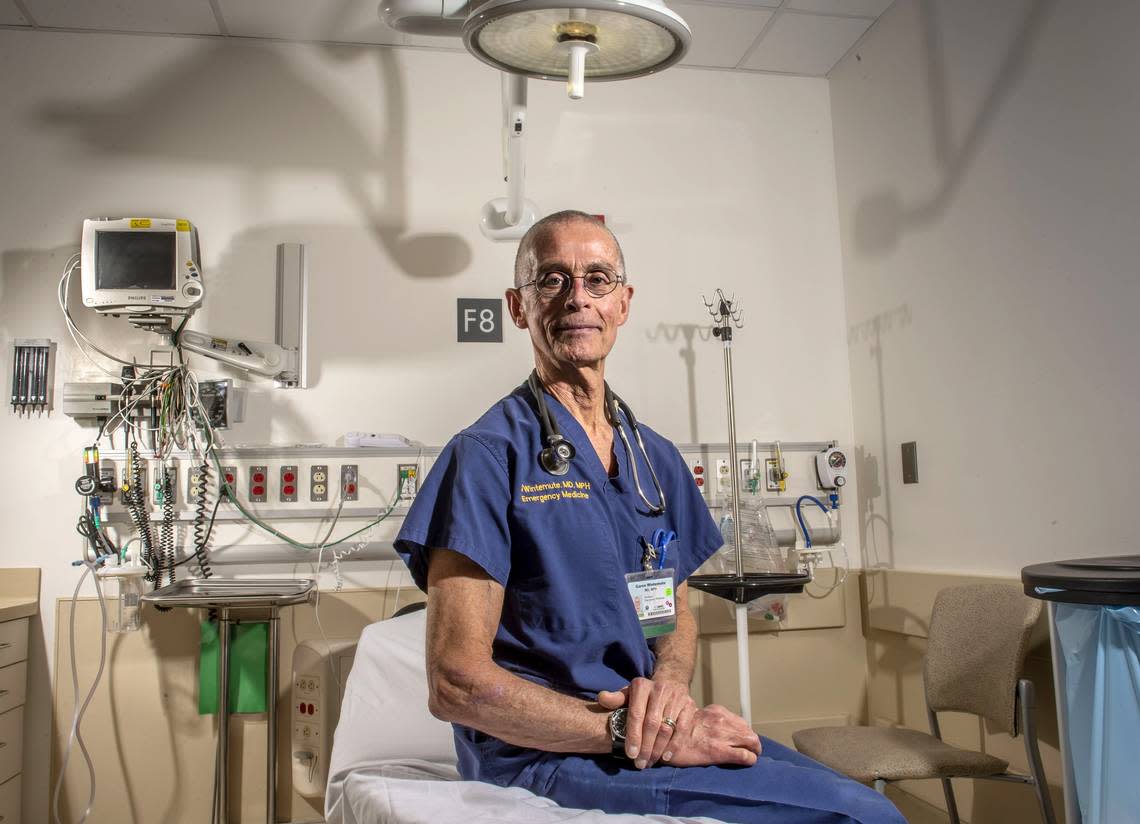‘Red flag’ gun laws can help prevent mass shootings, UC Davis study says

Researchers from the University of California, Davis, have found that, in the three years since California implemented the nation’s first law allowing guns to be taken from individuals who pose an extreme risk, the so-called red flag orders have prevented at least 21 mass shootings.
“If somebody were asking, ‘The next time this situation comes up, should we use one of these orders if they’re available to us,’ I would say, ‘Absolutely.’” said Dr. Garen Wintemute, director of the violence prevention research program at UC Davis Medical Center.
Red flag orders are more formally known as gun violence restraining orders in California and extreme risk protection orders elsewhere in the country. They give law enforcement a chance to remove guns from people who threaten to injure or kill themselves or someone else, Wintemute said, and they’re useful either in cases where no crime has been committed and consequently no one can be arrested, or in cases where mental illness is not involved and consequently a psychiatric evaluation can’t be done.
He cautioned that the UC Davis research doesn’t prove that red-flag orders work broadly but rather that members of the public can make a difference in preventing these crimes if they go to law enforcement, if law enforcement has the right legal tools, and if law enforcement has been trained in how to use the tools.
“The takeaway … is to repeat the message we’ve all heard a lot: ‘If you see something, say something,’” “Wintemute said. “I come away from this having made a personal commitment. If I come across information like this, just as a member of the public, I am going to inform law enforcement, so that something can be done.”
Time and again, in the 21 cases Wintemute’s research team found, members of the public — whether they were family members, co-workers, or acquaintances of the people who posed a risk — took action by either talking to law enforcement or, in two cases, going to a judge.
To be able to prove red-flag orders work, Wintemute said, he’d need a similar number of cases where restraining orders were denied and guns weren’t removed to determine whether the weapons were then used to follow through on threats.
The UC Davis study was slated for release Monday in the Annals of Internal Medicine, Wintemute said, but it is just a coincidence that it appears virtually on the heels of mass shootings in Gilroy; El Paso, Texas; and Dayton, Ohio. He and his six co-authors had submitted their paper to the peer-reviewed journal last spring.
They had not even started out looking for cases of mass shootings, Wintemute said. Initially, he said, they had just sought to obtain court records for all 414 cases where California law enforcement had requested gun violence restraining orders.
As the records started trickling in, Wintemute said, team members couldn’t help sharing when they read a case that involved threats of a mass shooting. At the time that the UC Davis report was written, they had 159 of 414 court cases.
To find out whether threats had been exercised, UCD researchers searched media reports to find whether the names of defendants in the cases appeared as part of news articles on homicides or suicides, but none were found.
The 21 cases involved mostly non-Hispanic white men whose mean age was 35, according to the report, and their motivations for making threats varied:
In seven court cases, defendants threatened workplace violence against relatives, co-workers or former co-workers.
In five, individuals threatened violence against schools or children.
Another five made threats described as motivated by domestic situations or political or social beliefs.
One individual threatened to kill people after getting a cancer diagnosis, and another threatened to shoot up a clinic because he was upset about his orthopedic treatment.
Two people, who had been diagnosed with mental illness, made threats deemed credible.
People place far too much importance upon mental health as a motivation for mass shootings, Wintemute said, and professionals in the gun violence and mental health field know that mental illness accounts for well under 5 percent of interpersonal violence, meaning violence by one person against another.
“If we’re talking about violence to self — attempted suicide or suicide — then mental illness becomes very much more important,” Wintemute said, “and I suspect when … we’ve looked at all 414 records or the largest number we’re able to get, what we’ll find is most of the time, these orders are being used to prevent suicide.”
Law enforcement officers can request temporary emergency or ex parte restraining orders that last up to three weeks, UC Davis researchers explained in their report, and family members also may file the ex parte petitions. They are all considered by a judicial officer.
For longer-term orders, relatives and law enforcement officers must have a hearing where the defendant gets a chance to make a case to keep their weapons. The prosecutors must show “clear and convincing evidence” that the person presents a significant danger to get a restraining order from a judge.
Wintemute said he believes that red flag orders could have been used successfully to prevent mass shootings where a clear statement of intent is made or someone observes behavior that concerns them. Theoretically, he said, it’s possible this could even help in cases where law enforcement is informed within hours of a threat being made. Typically, though, he said, “we’re talking about days or weeks, and there is an opportunity” to intervene.

